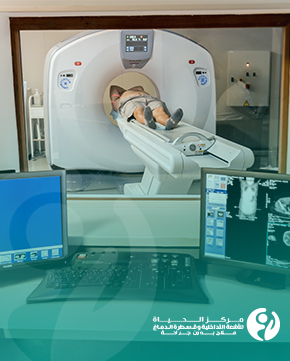
Interventional radiology is a diagnostic and therapeutic technique used in various medical fields to obtain accurate images and direct treatment precisely to targeted areas of the body. Many people choose to consult the Al Hayat Center for Interventional Radiology and Neurointervention in Iraq to treat their condition due to the many benefits that interventional radiology offers compared to traditional options such as surgery. Here are the benefits of interventional radiology:
Features and Benefits of Interventional Radiology:
1. Suitable for many categories of patients: Not all patients can undergo surgery involving general anesthesia as health conditions and chronic diseases such as diabetes, obesity, and hypertension which may increase the risk of complications due to general anesthesia. Lifestyle choices such as smoking, drug use, or heavy alcohol consumption also increase the risk of complications. Most interventional radiology treatments are suitable for patients who cannot undergo surgery because these interventions rely on a local anesthetic and require only a small incision.
2. Minimize surgical risks: Compared to traditional surgical treatments, interventional radiology can reduce patient risks. This approach typically includes less significant blood loss, lower risk of infection, and decreased likelihood of damaging surrounding tissues, thanks to precise imaging techniques.
3. Lower pain: Interventional radiological procedures are performed through a small incision, usually in the groin, and do not require large stitches, pins, or bandages. Since local anesthesia is applied before the incision is made, any pain that occurs after the procedure is usually very mild.
4. Accurate diagnosis: Interventional radiology obtained detailed images of organs and blood vessels, enabling accurate diagnosis of diseases and health issues. It can also be used for preventive diagnosis, even without obvious symptoms, allowing for early detection of certain diseases.
5. Targeted treatment: Interventional radiology precisely targets treatment directly to affected areas, enhancing treatment effectiveness while minimizing side effects and impact on surrounding healthy tissue. It is often employed to target cancerous tumors directly, helping to reduce their size or control their growth.
6. Symptoms management: Interventional radiology can control symptoms associated with cancerous tumors, such as pain and pressure on nearby nerves and organs. Interventional radiology can relieve symptoms and improve patient's quality of life.
7. Scar-free: Interventional radiology requires only a small incision, which means no surgical scars.
8. Less invasive and faster recovery: Patients return to their normal lives much faster than if they had undergone major surgery because interventional radiology treatments are minimally invasive, thus minimizing the need for traditional surgical procedures, minimizing interference to healthy tissue and, and reducing pain and recovery time.
9. Shorter hospital stays: Most of the procedures performed by an interventional radiologist are one-day procedures which means no long hospital stays as required in traditional surgeries.
10. Non-surgical procedures: Interventional radiology can perform non-invasive surgeries such as dilation of blood vessels or placement of vascular meshes.
11. Complementing other treatments: In some cases, interventional radiology is used as part of a multidisciplinary treatment plan, where it is coordinated with surgery, chemotherapy, and hormone therapy. Interventional radiology can enhance the effectiveness of the overall treatment and improve treatment outcomes, such as in oncology cases. Interventional radiology is used before surgery to reduce the size of the tumor, facilitate the surgery, reduce the associated risks, and improve the result of the procedure.
Frequently asked questions:
What does interventional radiology treat?
Interventional radiology treats brain problems and diseases by treating weak blood vessels in the brain, as well as the dilatation of blood vessels that may cause bleeding in the brain if not treated promptly.
How long does interventional radiology take?
Interventional radiology takes about 30 minutes to an hour, unlike other procedures that take a very long time.

